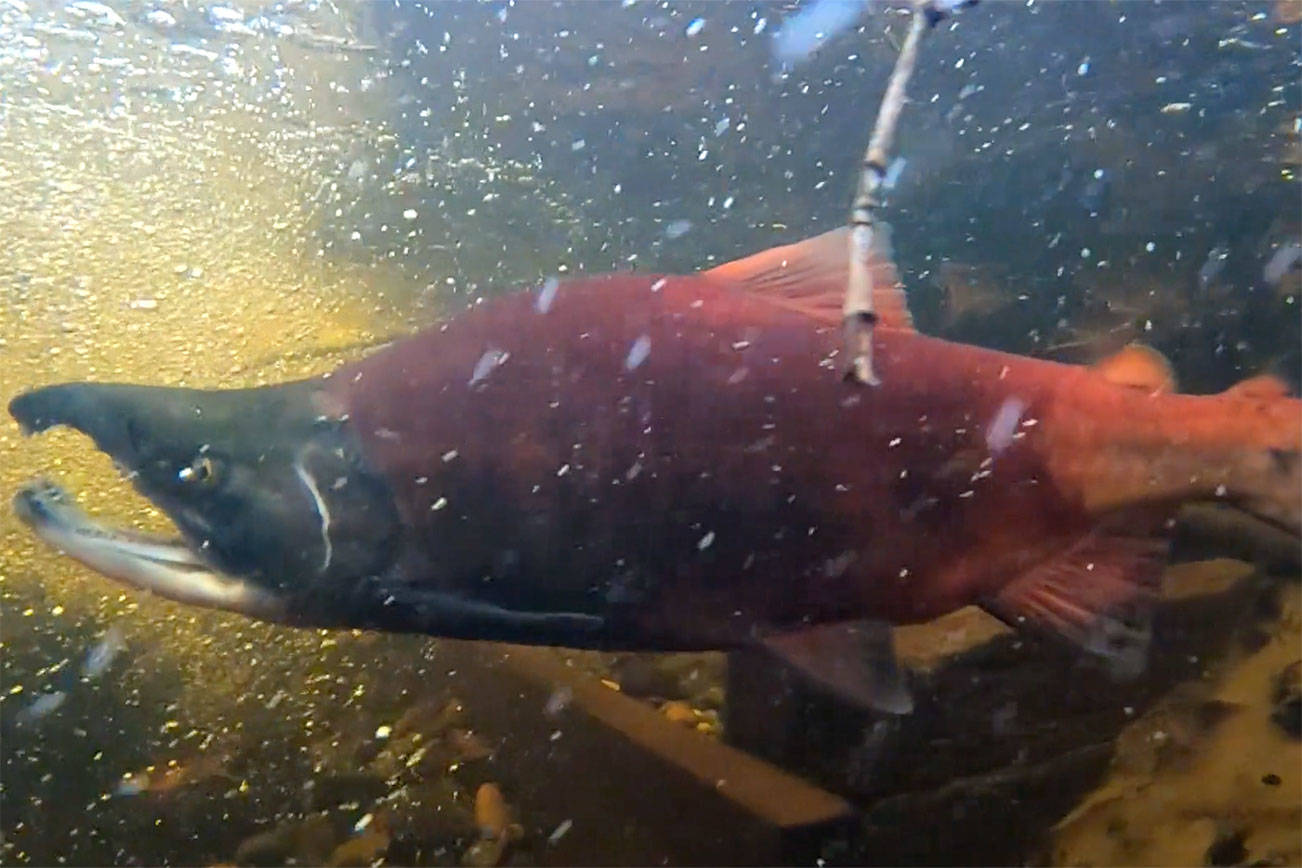Lake Sammamish kokanee aren’t out of the woods by any stretch, but there’s reason to be optimistic about the fate of the little red fish after this year’s spawn count.
It’s estimated that there were around 82 adult kokanee that returned from Lake Sammamish to spawning streams this January. Jim Bower, a fish ecologist with King County, said that doesn’t sound like a lot, but it’s a marked improvement from the 19 adults that returned in 2018.
“Salmon populations are basically a numbers game,” Bower said. “You know you’re not going to get 1,000 fish returning from 19 adults, so to have 82 fish return from 19 fish is actually very good.”
Lake Sammamish is home to genetically unique kokanee salmon, which spend their entire lives in freshwater streams and the lake. It usually takes three years for the salmon to reach maturity and return to the streams they were born in to spawn.
The 2018 return was the worst ever recorded at the lake, and raised serious concerns of extinction. It spurred an expansive partnership between the county, tribes, the state and local organizations to save the fish. There are more than 20 stakeholders or partner organizations that are working to save the fish.
The 82 fish that returned this year are a testament to the success of that partnership, but there’s still a long way to go — in 2013, there were more than 18,000 kokanee that returned to spawn.
The fish took a severe hit between 2014 and 2016, when hot summer temperatures drove fish deeper into the lake and into areas without enough oxygen for them to survive. The results were disastrous for the kokanee. These conditions, known as a “squeeze,” happen occasionally in the lake, but usually not so many summers in a row.
Heat-stressed fish are also more vulnerable to disease, predators and parasites.
A number of strategies have been deployed to help the fish — culverts have been removed, fish sperm has been frozen and a captive breeding program on Orcas Island has seen young fish, called fry, flown up to be raised in safety.
“These fish are going to tell us what’s working and what’s not,” said David St. John, policy advisor for the county’s Department of Natural Resources and Parks.
The hope is that next winter, the returning salmon count will be even higher and keep climbing from there.
Historically there were up to three runs of kokanee in the lake, beginning in September and stretching through December. The early two runs went extinct in the 2000s.
Locals can help the salmon by not letting fertilizers drain into Lake Sammamish — and by keeping as much land as possible unpaved to allow more water to seep into the groundwater system and cool the lake.



